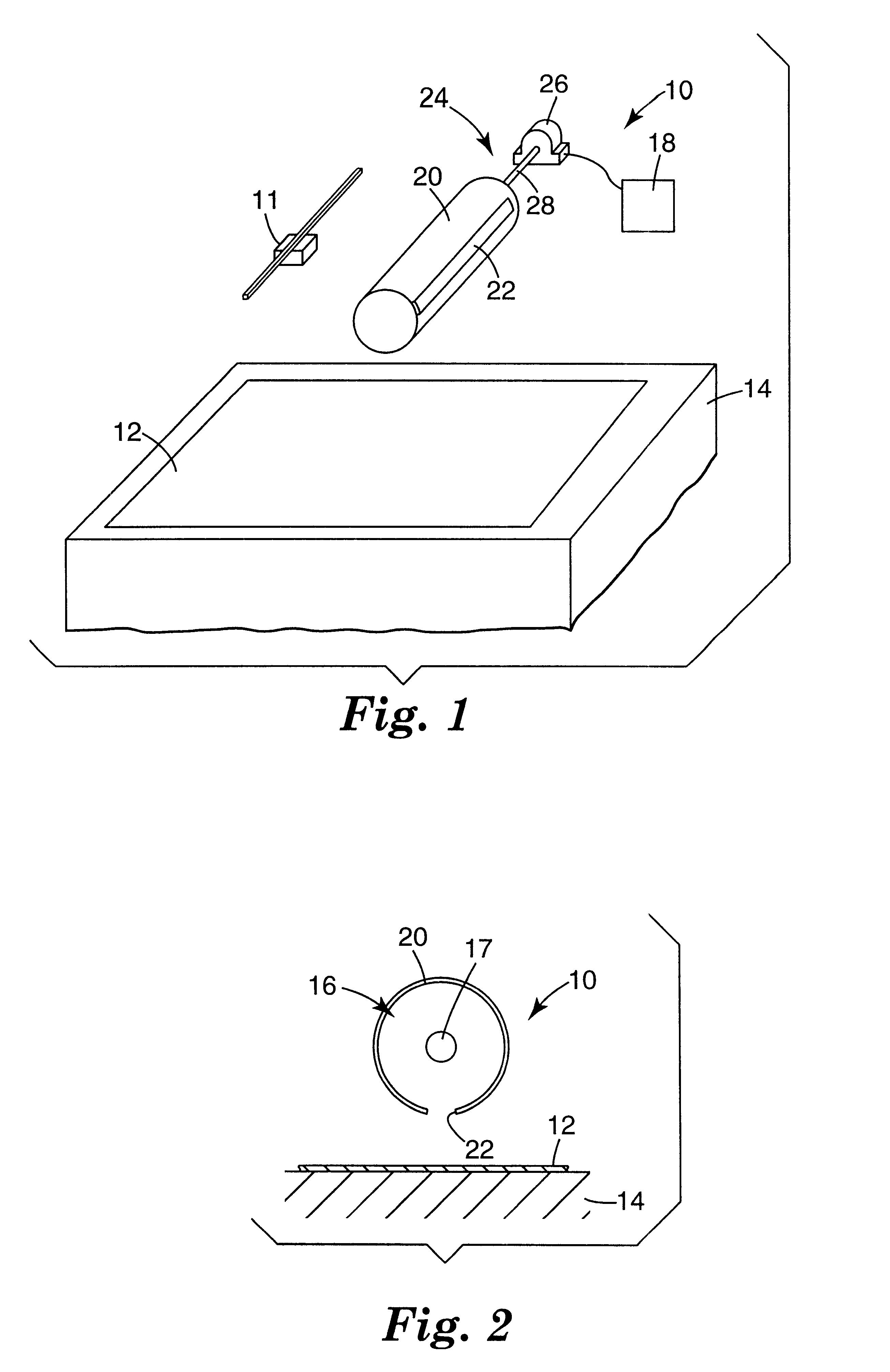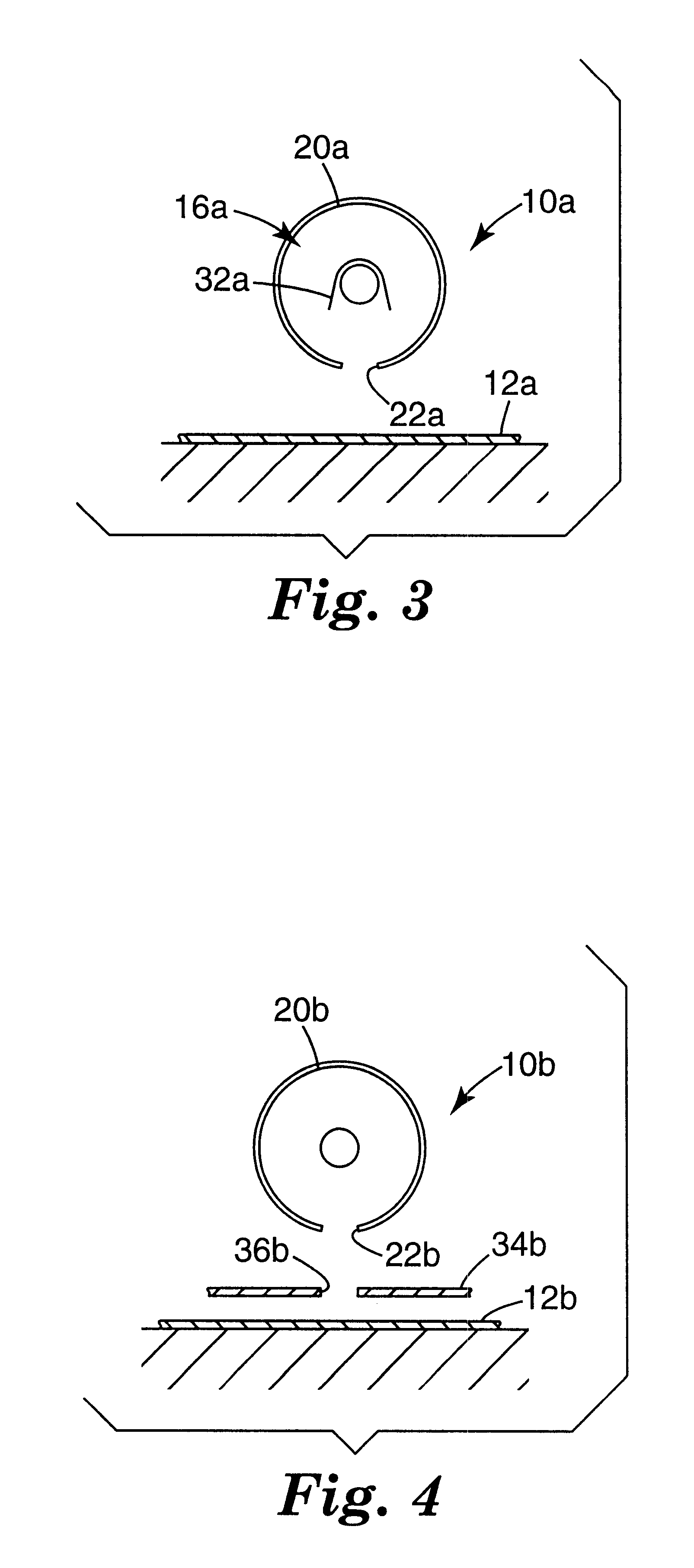Method and apparatus for radiation curing of ink used in inkjet printing
a radiation curing and inkjet printing technology, applied in the direction of printing after-treatment, printing, other printing apparatus, etc., can solve the problems of solvent evaporated solvent, environmental hazards, and insufficient use of water-based inks
- Summary
- Abstract
- Description
- Claims
- Application Information
AI Technical Summary
Problems solved by technology
Method used
Image
Examples
Embodiment Construction
An inkjet printer using radiation curable ink includes a bank of medium pressure mercury lamps such as Fusion brand ultraviolet lamps, catalog no. HP-6, commercially available from Fusion Systems Inc., Gaithersburg, Md. Each lamp provides 475 watts per inch (187 watts per cm.) at 100% power.
The apparatus in this example has a curing device, shield and mechanism similar to the apparatus 10 described above. From the properties of the lamp, a relationship between the speed of the substrate and the radiation dose can be obtained by measuring the dose at various speeds. The relationship for the Fusion brand HP-6 lamp is:
dose=15600 / web speed,
where the dose is measured in mJ / cm.sup.2, and the web speed is measured feet / minute. The dosage can also be calculated by the following equation:
dose=intensity.times.time,
where the intensity of the lamp is 2.2 watts / cm.sup.2.
Combining the two equations above allows the optimum window width to be calculated for the chosen lamp. In this case, that valu...
PUM
 Login to view more
Login to view more Abstract
Description
Claims
Application Information
 Login to view more
Login to view more - R&D Engineer
- R&D Manager
- IP Professional
- Industry Leading Data Capabilities
- Powerful AI technology
- Patent DNA Extraction
Browse by: Latest US Patents, China's latest patents, Technical Efficacy Thesaurus, Application Domain, Technology Topic.
© 2024 PatSnap. All rights reserved.Legal|Privacy policy|Modern Slavery Act Transparency Statement|Sitemap



